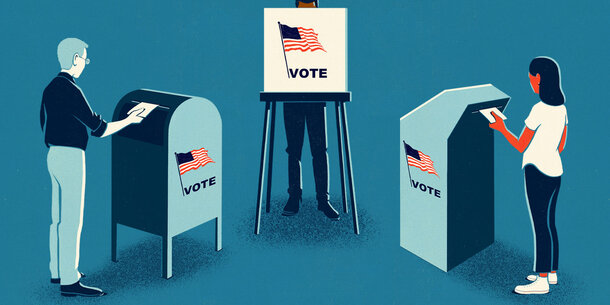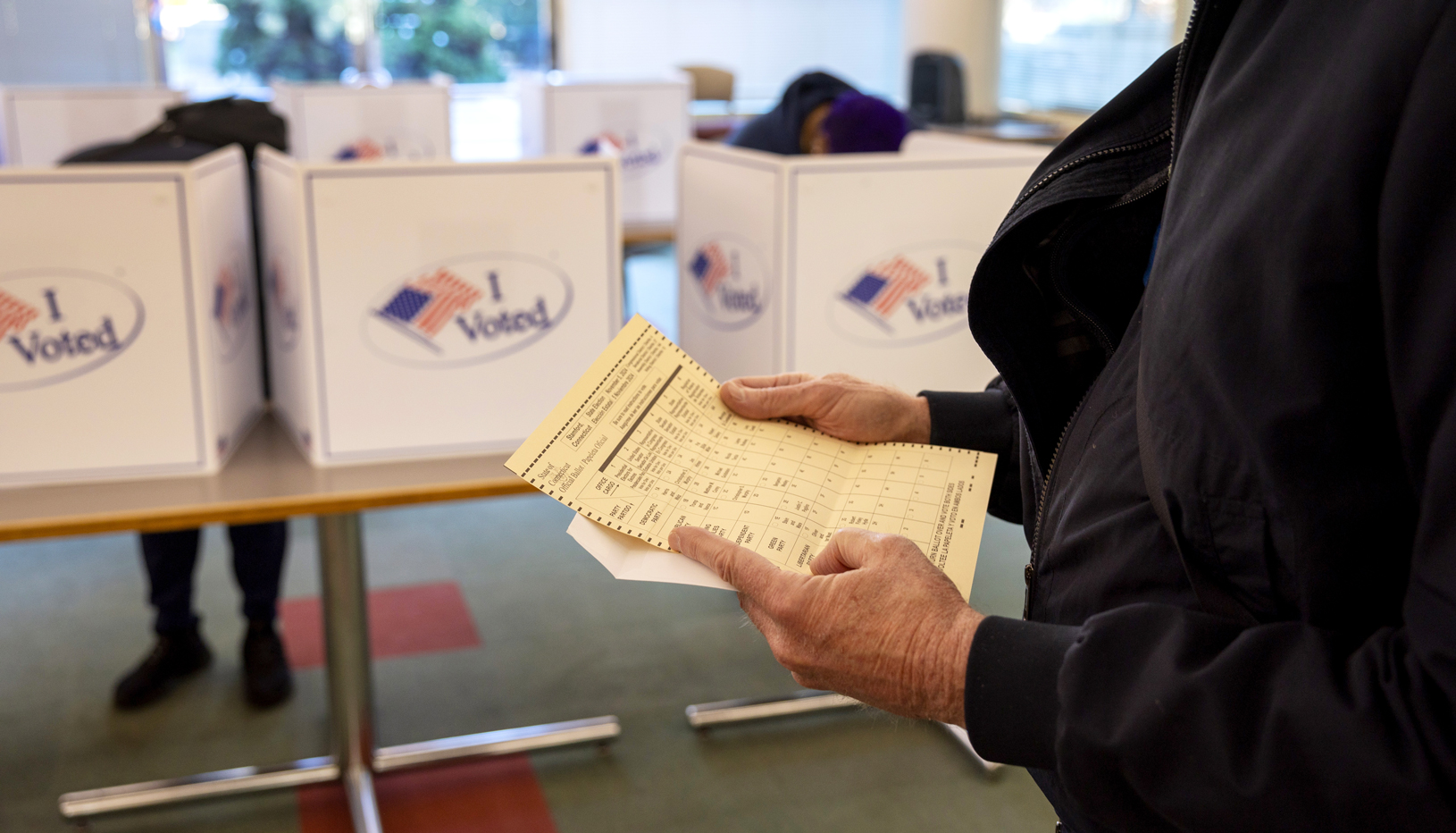The January 6 insurrection at the Capitol seemed to mark a new peak in extremist intimidation targeting public officials. But it was hardly the only act of political violence to break the period of relative stability that followed the assassinations of the 1960s.footnote1_8c-GmGTOxCJNt59VWN0b5UGd0ojOEWi5wixsrKkMeOs_j0Af3gJM3ypw1Ned Parker and Peter Eisler, “Political Violence in Polarized U.S. at Its Worst Since 1970s,” Reuters, August 9, 2023, https://www.reuters.com/investigates/special-report/usa-politics-violence/. There was the 2017 shooting of U.S. Rep. Steve Scalise and colleagues by a Trump detractor.footnote2_hZPxax1ox4xi72BAUFemkmpqg2BGsoKqWie8j800dmA_pjkyjI3pZuhY2Michael D. Shear, Adam Goldman, and Emily Cochrane, “Congressman Steve Scalise Gravely Wounded in Alexandria Baseball Field Ambush,” New York Times, June 14, 2017, https://www.nytimes.com/2017/06/14/us/steve-scalise-congress-shot-alexandria-virginia.html; and Domenico Montanaro, “Sanders of Supporter and Alleged Shooter: ‘Violence of Any Kind Is Unacceptable,’” NPR, June 14, 2017, https://www.npr.org/2017/06/14/532935398/sanders-of-supporter-and-alleged-shooter-violence-of-any-kind-is-unacceptable. There was the hammer attack on U.S. Rep. Nancy Pelosi’s husband by a right-wing conspiracy theorist who sought the then House speaker in her home. Then there were threats by Republican extremists against Republican members of Congress for refusing to support their preferred candidate for speaker.footnote3_SQyU4wE49MZelQD4CFlhzYSSebqpMjbBXueyqgICdR8_seQoB0L6L3sy3Daniel Trotta, “Federal Jury Convicts Man in Hammer Attack on Pelosi’s Husband,” Reuters, November 17, 2023, https://www.reuters.com/legal/jury-deliberates-fate-man-who-attacked-nancy-pelosis-husband-2023–11–16; and Justine McDaniel and Marianna Sotomayor, “Threats Continue Toward Republicans Voting Against Jordan for Speaker,” Washington Post, October 20, 2023, https://www.washingtonpost.com/politics/2023/10/20/house-speaker-jordan-threats/. These acts grabbed headlines and spurred increases in security for federal officials.footnote4_lR35X6t4aWH06fKZk4RIRFMoJh2EAYcNKmWvXHltCM_kncR6UQNxSlb4Greg Morton, Marianna Sotomayor, and Camila DeChalus, “Lawmakers Are Spending Way More to Keep Themselves Safe. Is It Enough?,” September 18, 2023, https://www.washingtonpost.com/politics/2023/09/18/congress-security-spending-violence-threats/; and Melissa Quinn, “House Passes Bill to Bolster Security for Supreme Court Justices,” CBS News, June 14, 2022, https://www.cbsnews.com/news/supreme-court-security-bill-house-vote-brett-kavanaugh/.
Yet over the same period, with far less attention and often little recourse, officeholders serving in local and state government across the country have faced a barrage of intimidating abuse. Threats and attacks constrain how freely officeholders interact with constituents, narrow the spectrum of policy positions they feel safe to support, and make them less willing to continue in public service. Unaddressed, the problem stands to endanger not just individual politicians but, more broadly, the free and fair functioning of representative democracy — at every level of government.
“Last fall was the last really serious death threat I got,” one state legislator told the Brennan Center. “It was like date, time, location specific. They were going to kill me and then go to the police station and blow themselves up and take as many officers with them as possible.”
A series of national surveys completed in October 2023 — one of state legislators and four quarterly surveys of local officeholders — and three dozen in-depth interviews reveal how significantly abuse affects the tenure of these officeholders and shapes their decisions. Taken together, the data sets represent more than 1,700 officials from all 50 states and include a range of ages, party affiliations, ideologies, genders, sexual orientations, racial and ethnic identities, and religions.
Officeholders across these demographic categories reported experiencing threats or attacks within the past three years. And the volume and severity of abuse have increased in recent years, they said. More than 40 percent of state legislators experienced threats or attacks within the past three years, and more than 18 percent of local officeholders experienced threats or attacks within the past year and a half. The numbers balloon to 89 percent of state legislators and 52 percent of local officeholders when less severe forms of abuse — insults or harassment such as stalking — are included.footnote5_cw6l8T-8GTzl1wsYS5mrVfrtC-SaZIxaeqVXVf9RBg_wWC1mRTb4Zxd5The surveys of state and local officeholders all provided the gradations of abuse in the box on page 3, with the survey of state legislators spelling out the exact definitions.
The surveys and interviews revealed important variations among officeholders’ experiences. Abuse directed at women, people of color, religious minorities, and LGBTQ+ individuals in office often conveyed misogynistic, racist, religious, or homophobic hate.
Some respondents mentioned viral social media and deregulation of guns as aggravating factors. Significant numbers were unaware of formal procedures to report incidents or of any recent increases in government-provided security for buildings or their transport.
In a time of heated debate about existential issues such as reproductive autonomy, gun regulation, and racial equity, these threats to the free and fair functioning of representative government implicate everyone.
As Virginia House Delegate Eileen Filler-Corn put it, “We were going to help improve others’ lives. But we never thought our lives, or most importantly, our family members’ or significant others’ lives, would be in jeopardy. I think you’re going to lose a lot of good people because of it.”
Major Findings
State and local officeholders report alarming, increasing levels of threats and other abuse.
- Forty-three percent of state legislators experienced threats.
- Eighteen percent of local officeholders experienced threats.
- Thirty-eight percent of state legislators reported that the amount of abuse they experience has increased since first taking public office, while only 16 percent reported that it has decreased.
- Twenty-nine percent of state legislators reported that the seriousness of the incidents has increased, while only 12 percent reported that it has decreased.
The severity and nature of abuse varies across demographic groups.
- Larger shares of women than men, and larger shares of Republicans than Democrats, reported increases in the severity of abuse since first taking public office.
- Women were three to four times as likely as men to experience abuse targeting their gender.
- Officeholders of color were more than three times as likely as white officeholders to experience abuse targeting their race.
- Larger shares of women and people of color serving in local elected office experienced abuse related to their families — including their children — than did other officeholders.
- Women serving in state legislatures were nearly four times as likely as men to experience abuse of a sexual nature.
Abuse threatens the free and fair functioning of democracy.
- More than 40 percent of local officeholders said they were less willing to run for reelection or higher office at the time they were surveyed because of abuse. For women, the rates of possible attrition are higher, with approximately half saying they were less willing to continue serving.footnote6_c6jrSNUASoJwRwC5QraEFwHq8CXa90izXaHr37Ums_yA35LAB1CSUZ6The survey of local elected officeholders asked,“To what extent have concerns about insults, harassment, threats, or attacks negatively impacted your willingness to do each of” a variety of actions, such as running for reelection. For each proposed action, officeholders could respond on a four-category scale: “a lot,” “somewhat,” “a little,” or “not at all.” When reporting what proportion of local officeholders are less willing to to engage in these actions, we grouped together responses of “a lot,” “somewhat,” and “a little.” For example, when asked about willingness to run for reelection, 14 percent of officeholders answered “a lot,” 11 percent answered “somewhat,” and 14 percent answered “a little,” for a total of 39 percent saying they are less willing to run for reelection. Among women, 20 percent answered “a lot,” 15 percent answered “somewhat,” and 14 percent answered “a little,” for a total of 49 percent. The gender differences did not change meaningfully when we tried grouping answers differently: For example, 25 percent of officeholders were “a lot” or “somewhat” less willing to run for reelection, compared with 35 percent of women officeholders.
- Approximately 20 percent of state officeholders and 40 percent of local officeholders acknowledged they were less willing to work on controversial topics due to abuse.
- Fifty-three percent of state legislators believed that abuse had deterred their colleagues from taking on controversial topics.
- Approximately half of officeholders reported reluctance to communicate via social media because of abuse.
- Twenty-three percent of state legislators said they were less likely to hold events in public spaces because of abuse.
Given the prevalence of abuse facing local and state officeholders — and the threat it poses to representative democracy — government and other authorities must act quickly to mitigate the problem.
Key Recommendations
Officeholders and other influential figures should condemn abuse and promote officeholder safety.
- State and local governments should provide officeholders training, conducted by experts, in resisting hate-based violence that includes techniques in bystander intervention — how those not directly perpetrating or experiencing abuse can help to reduce the problem.
- Other influential figures, including business and community leaders, should publicly reject abuse of officeholders.
- States should provide officeholders and staffers with mental health services and encourage their use.
States should systematize security and safety practices to protect both officeholders and the public.
- States should systematically monitor threats against officeholders, taking care not to impinge on civil liberties.
- States should provide adequate physical security resources and training for officeholders.
- States should regulate open and concealed carry of guns in places where officeholders engage with the public.
- States should permit candidates and officeholders to restrict guns at town halls, campaign rallies, and other public events.
- States should update campaign finance laws to permit candidate and party spending on legitimate security measures.
States, officeholders, and social media companies should update speech and privacy policies.
- States should protect local and state officeholders’ personal information, such as home addresses, with appropriate exceptions to enable public accountability.
- Legislative bodies, officeholders, and social media companies should prioritize the freedom to safely engage in public discourse as they update policies to reduce serious harm online.
Even in the current atmosphere of risk, many officeholders stressed that elected public service remains imperative and often rewarding for those who believe their communities deserve a voice in policymaking. Women and people of color in office especially expressed concern that exposing the frequency of abuse they experience could dissuade emerging leaders from forging ahead.
“It is a privilege and oftentimes a joy to be able to hold elected office and serve one’s community,” said Glynda Carr, president and CEO of Higher Heights, a nonpartisan nonprofit focused on expanding pipelines for Black women at all levels of elected government.
“But there is a long way to go, still. This study shows that those with power and resources must do more to foster the conditions for all talented people to be able to step up and lead,” she added. This perspective underscores the need for remedies that ultimately enable more people to participate safely and freely in the democratic process while avoiding unduly restricting civic spaces.
End Notes
-
footnote1_8c-GmGTOxCJNt59VWN0b5UGd0ojOEWi5wixsrKkMeOs_j0Af3gJM3ypw
1
Ned Parker and Peter Eisler, “Political Violence in Polarized U.S. at Its Worst Since 1970s,” Reuters, August 9, 2023, https://www.reuters.com/investigates/special-report/usa-politics-violence/. -
footnote2_hZPxax1ox4xi72BAUFemkmpqg2BGsoKqWie8j800dmA_pjkyjI3pZuhY
2
Michael D. Shear, Adam Goldman, and Emily Cochrane, “Congressman Steve Scalise Gravely Wounded in Alexandria Baseball Field Ambush,” New York Times, June 14, 2017, https://www.nytimes.com/2017/06/14/us/steve-scalise-congress-shot-alexandria-virginia.html; and Domenico Montanaro, “Sanders of Supporter and Alleged Shooter: ‘Violence of Any Kind Is Unacceptable,’” NPR, June 14, 2017, https://www.npr.org/2017/06/14/532935398/sanders-of-supporter-and-alleged-shooter-violence-of-any-kind-is-unacceptable. -
footnote3_SQyU4wE49MZelQD4CFlhzYSSebqpMjbBXueyqgICdR8_seQoB0L6L3sy
3
Daniel Trotta, “Federal Jury Convicts Man in Hammer Attack on Pelosi’s Husband,” Reuters, November 17, 2023, https://www.reuters.com/legal/jury-deliberates-fate-man-who-attacked-nancy-pelosis-husband-2023–11–16; and Justine McDaniel and Marianna Sotomayor, “Threats Continue Toward Republicans Voting Against Jordan for Speaker,” Washington Post, October 20, 2023, https://www.washingtonpost.com/politics/2023/10/20/house-speaker-jordan-threats/. -
footnote4_lR35X6t4aWH06fKZk4RIRFMoJh2EAYcNKmWvXHltCM_kncR6UQNxSlb
4
Greg Morton, Marianna Sotomayor, and Camila DeChalus, “Lawmakers Are Spending Way More to Keep Themselves Safe. Is It Enough?,” September 18, 2023, https://www.washingtonpost.com/politics/2023/09/18/congress-security-spending-violence-threats/; and Melissa Quinn, “House Passes Bill to Bolster Security for Supreme Court Justices,” CBS News, June 14, 2022, https://www.cbsnews.com/news/supreme-court-security-bill-house-vote-brett-kavanaugh/. -
footnote5_cw6l8T-8GTzl1wsYS5mrVfrtC-SaZIxaeqVXVf9RBg_wWC1mRTb4Zxd
5
The surveys of state and local officeholders all provided the gradations of abuse in the box on page 3, with the survey of state legislators spelling out the exact definitions. -
footnote6_c6jrSNUASoJwRwC5QraEFwHq8CXa90izXaHr37Ums_yA35LAB1CSUZ
6
The survey of local elected officeholders asked,“To what extent have concerns about insults, harassment, threats, or attacks negatively impacted your willingness to do each of” a variety of actions, such as running for reelection. For each proposed action, officeholders could respond on a four-category scale: “a lot,” “somewhat,” “a little,” or “not at all.” When reporting what proportion of local officeholders are less willing to to engage in these actions, we grouped together responses of “a lot,” “somewhat,” and “a little.” For example, when asked about willingness to run for reelection, 14 percent of officeholders answered “a lot,” 11 percent answered “somewhat,” and 14 percent answered “a little,” for a total of 39 percent saying they are less willing to run for reelection. Among women, 20 percent answered “a lot,” 15 percent answered “somewhat,” and 14 percent answered “a little,” for a total of 49 percent. The gender differences did not change meaningfully when we tried grouping answers differently: For example, 25 percent of officeholders were “a lot” or “somewhat” less willing to run for reelection, compared with 35 percent of women officeholders.













